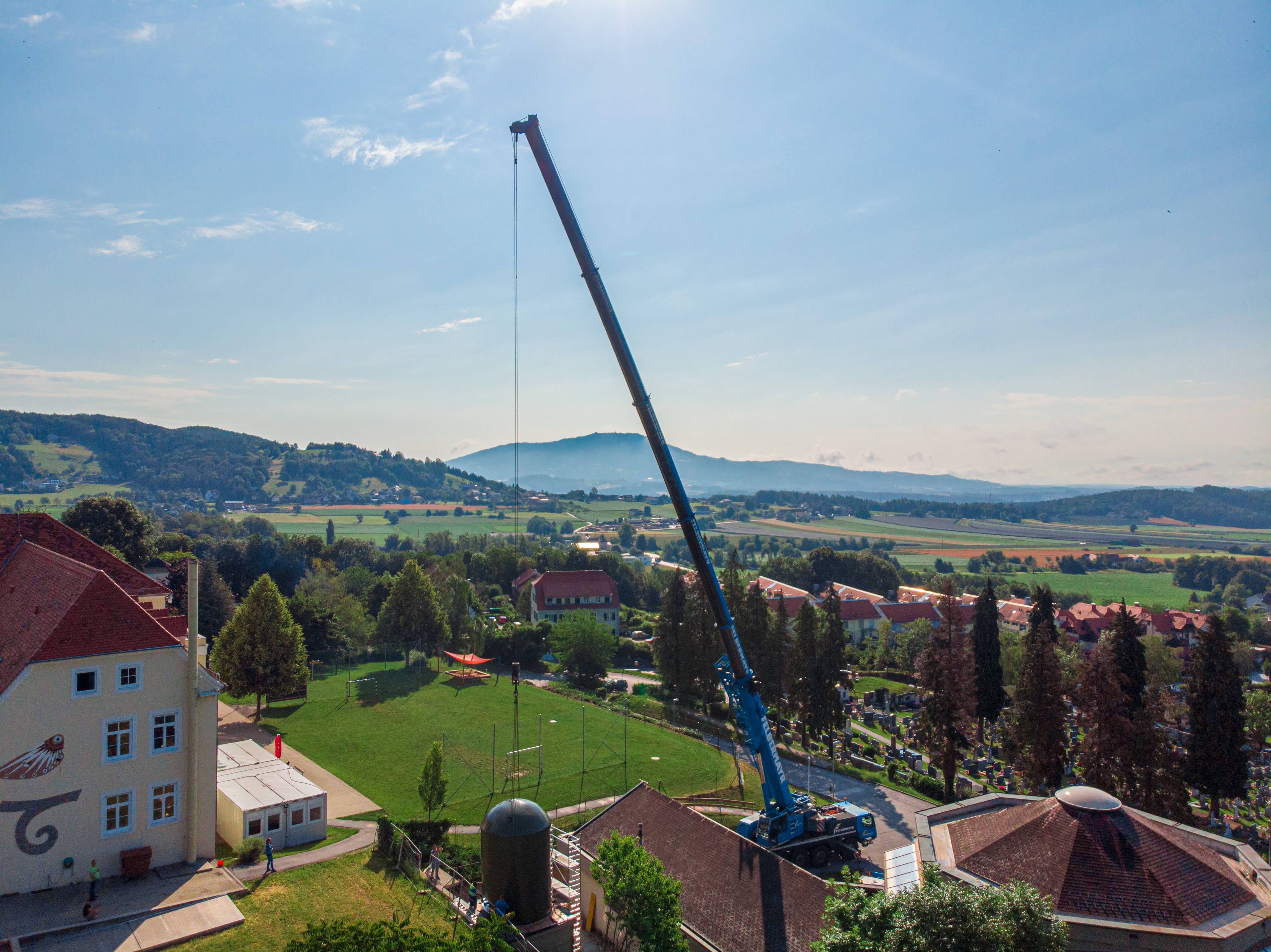The Road to Clean Energy Investment in Historic Buildings
A Case Study of Biomass Energy Storage Expansion in Weiz, Austria
Green energy investment can be difficult to plan in a historic building, more so in case of public buildings. In this case study we give your some tips on preparing such an investment. The expansion of the biomass heating plant for the historic church of Weizberg in Austria required a procurement/tendering procedure that considers input from experts and the Store4HUC deployment desk and follows national procurement law. Its investment specification combines outcomes and contributions of other documents and project results and its feasibility study is being carried out to meet the challenges associated with historical sites.
Legal preparation: The procurement procedure
The Federal Public Procurement Law (FPPL) in Austria provides the legal framework for awarding public works, supply and service contracts as well as works and service concessions and contests. It also contains regulations coordinating public procurement procedures of entities operating in the water, energy, transport and postal services sector. Additionally, it comprises procedural provisions relating to the review of the award of public contracts. The review proceedings at regional and local level are exempted from the FPPL and are subject to nine different provincial laws. However, these provincial laws do not differ significantly from the review proceedings provided for in the FPPL. It is required by law to have open calls across Europe for construction services above the threshold value of €186.000,00. Below €100.000,00, service activities can be assigned directly.
The procurement process usually follows selection criteria related to particular services, system components and requested competencies. Expected skills are selected through the analysis of the references provided. Additionally, corresponding experts are invited to the deployment desk in Weiz to assist in the preparation of expert opinions for the tendering process.

Financial planning: Investment specification for the expansion of the biomass heating plant at Weizberg
Due to the fact that the implementation of the expansion of the Weizberg biomass heating plant has to take place in a historic city centre, additional investments are to be expected. However, this is outweighed by the fact that these measures should have a high positive environmental effect on the protected historic town centre. An investment specification is prepared to estimate and calculate these additional expanses. This includes documents and project results of deployment desks (amongst others a risk assessment), the feasibility study, storage planning and design, key performance indicators, preliminary references of the pilot project and existing energy audits / energy analysis. The technical and performance requirements and specifications for the implementation of the expansion of the existing biomass heating plant are covered by storage planning and design. Key performance indicators are calculated for nine different indicators to make them comparable and assessable. These indicators include, amongst others, external energy demands and costs, annual CO2 abatement, autarky rate, profitability and stimulation of the local economy. Also energy and material balances are prepared to compare potential environmental impacts before and after project implementation. Additionally, the installation of a wide range of new equipment and sources would allow a more efficient and accurate calculation and analysis of life cycle costs.
In terms of technical solutions, storage technology is the most energy-efficient solution, yet. And the preferred solution for the expansion (water buffer storage) is technically proven and can be considered as the most cost-effective compared to other storage technologies.
The integration of the planned expansion will reduce the operating time of the heating network in the summer months, reduce heat losses, optimise the use of surplus heat from the boiler plant and generally make the operation of the heating network more dynamic. Furthermore, the efficiency of the fuel boiler will be increased, emissions of pollutants will be reduced, service life of the plant components will increase, maintenance intervals will be extended and sweeping intervals can be increased. All this factors lower general operating costs, prolong the plant components operating time and reduce emissions.

Feasibility of the energy storage expansion in the Weizberg biomass heating plant
In order to assess whether the challenge of expanding the biomass heating plant at Weizberg is feasible at all, all relevant factors must be taken into account - including economic, technical, legal and scheduling considerations. This is done in order to fully understand all aspects of the project, to become aware of any potential problems that can occur while implementing the project, and finally to determine, after considering all significant factors, if the project is even worth undertaking. But however big the challenges are, there is an urgent need to catch up in terms of energy efficiency and the use of renewable energy sources, especially in districts with historic monuments and landscapes that are under protection.
This particular project / this expansion is following the European and international guidelines and recommendations for monument preservation and restoration as well as the regional climate and energy strategies of the City of Weiz, the Energy Region Weiz-Gleisdorf and the Catholic Church of Styria. The need to modernise/expand the existing biomass heating plant is obvious, due to the fact that plant currently has no thermal energy storage and therefore operates inefficiently. And with the technical solutions available, the implementation of the expansion should easily be feasible. Unfortunately, the implementation of a heat storage system at a historic site requires additional investments. However, the chosen innovative approach makes it possible to integrate the expansion of the existing biomass heating plant (including the planned water buffer tank) into the overall picture of the historic city centre Weizberg. This pilot project can show that large thermal energy storage systems are a technical and economical viable option for the future supply of heating and cooling in districts with historic monuments and landscapes that are under protection.
For more information on the full Pilot, click: Pilot Activity in Weiz Austria in explained
